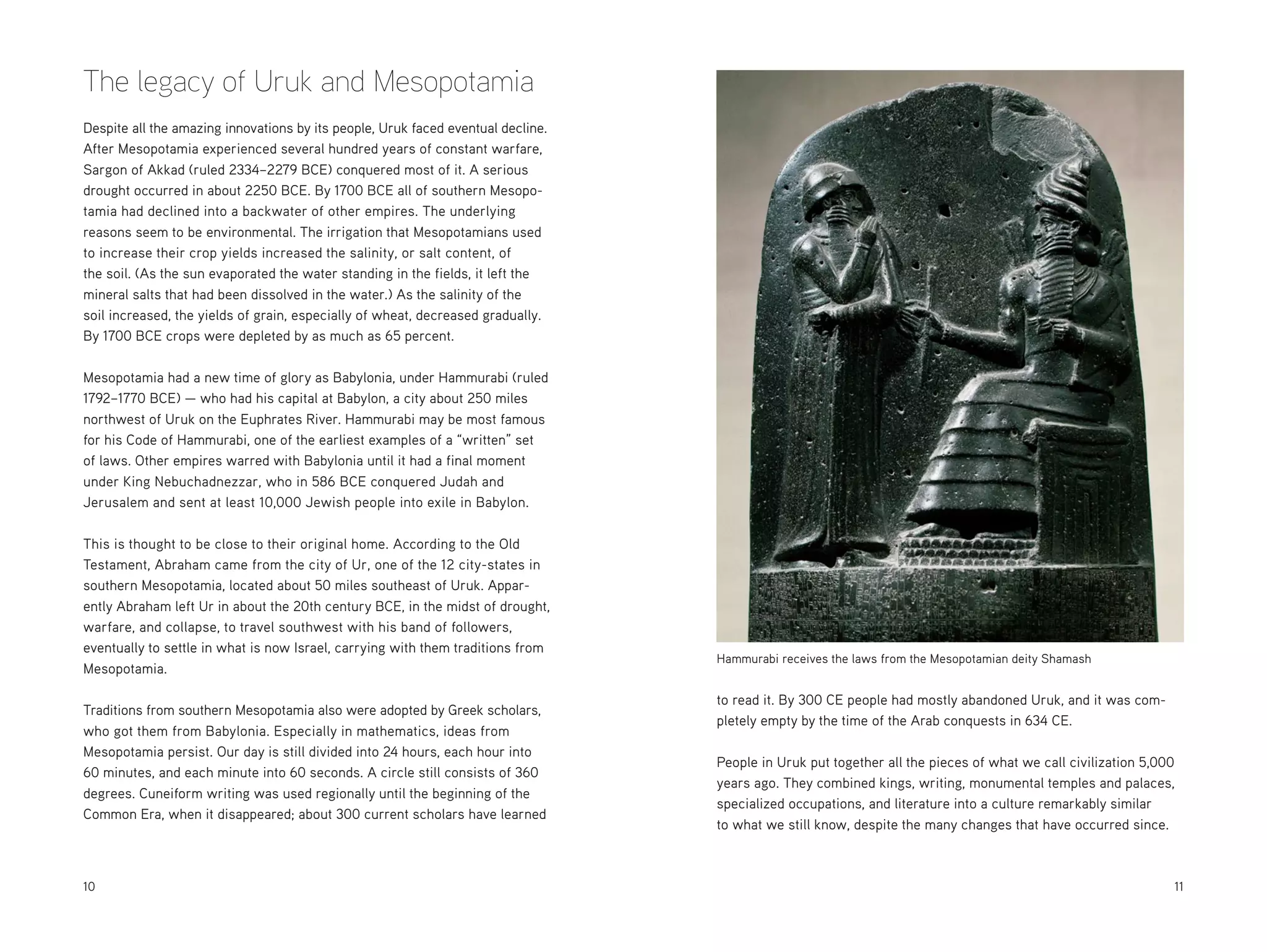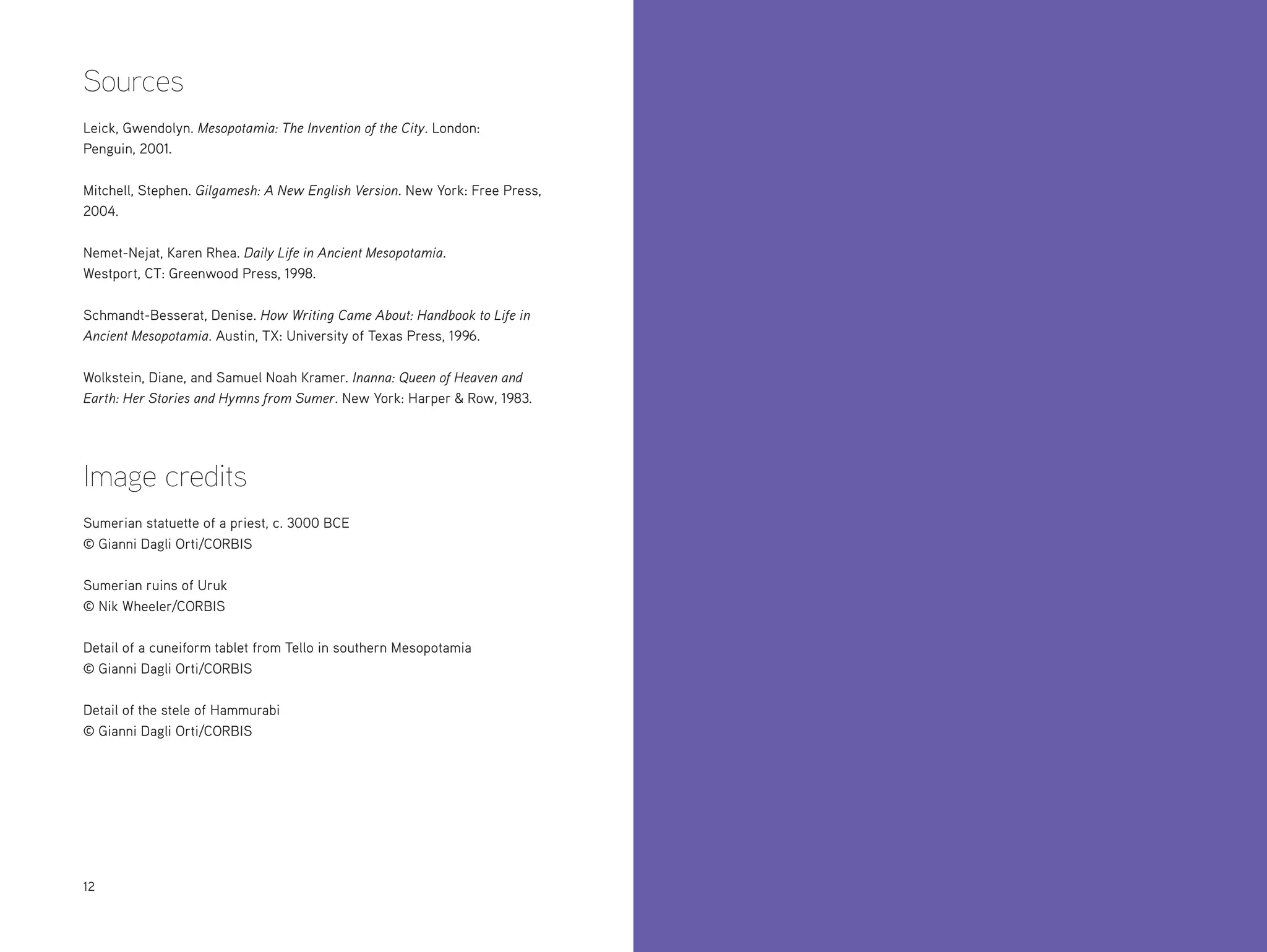Uruk, located in ancient Mesopotamia, was the world's first major city, emerging around 3600-2600 BCE and known for its innovations such as social hierarchies, specialized occupations, and early writing (cuneiform). At its height, Uruk housed 50,000-80,000 inhabitants, with a complex social structure dominated by priests and later kings, and its people produced significant literary works, including the Epic of Gilgamesh. Despite its advancements, Uruk faced decline due to environmental factors and warfare, ultimately leading to its abandonment by 300 CE.

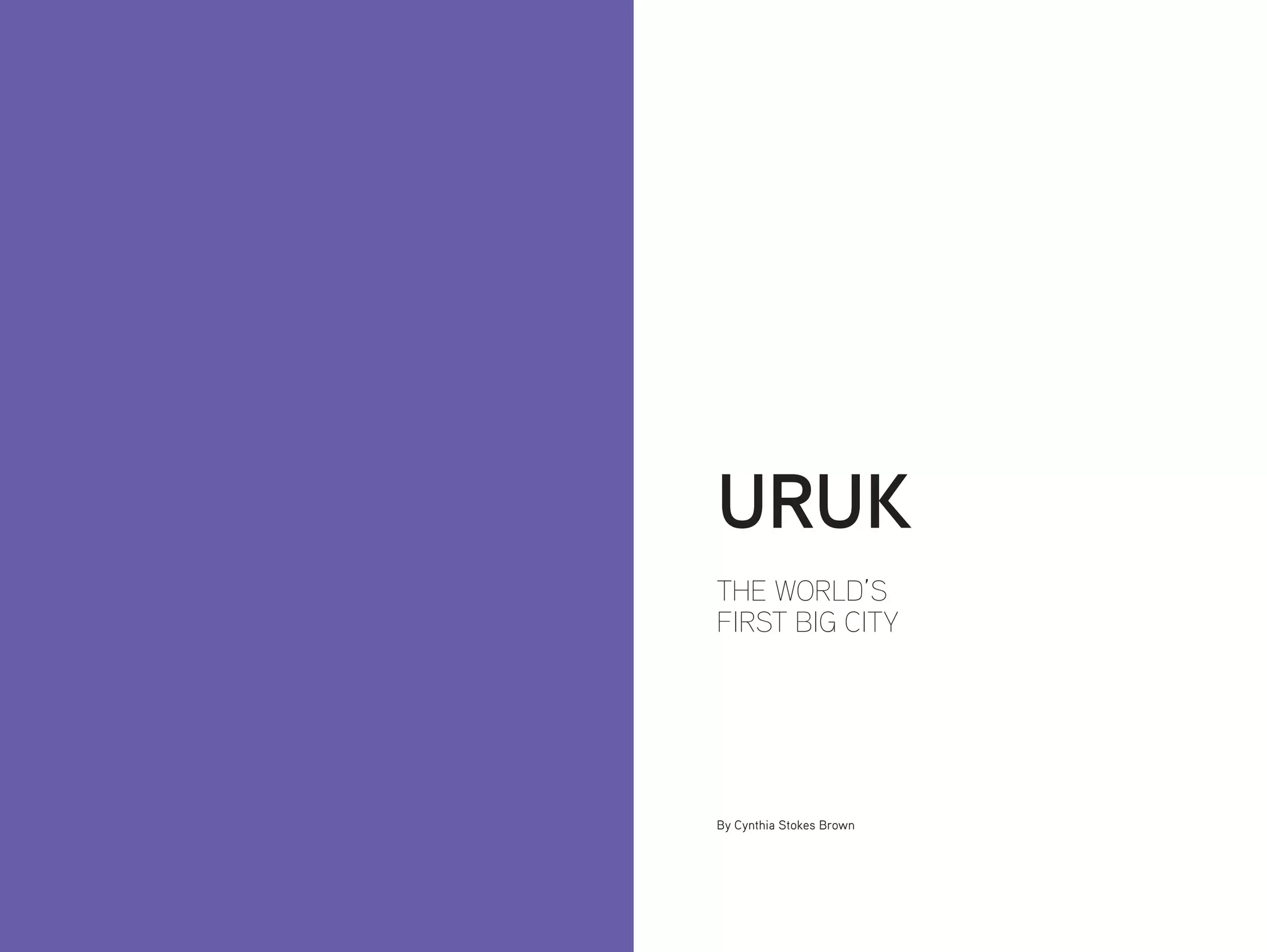
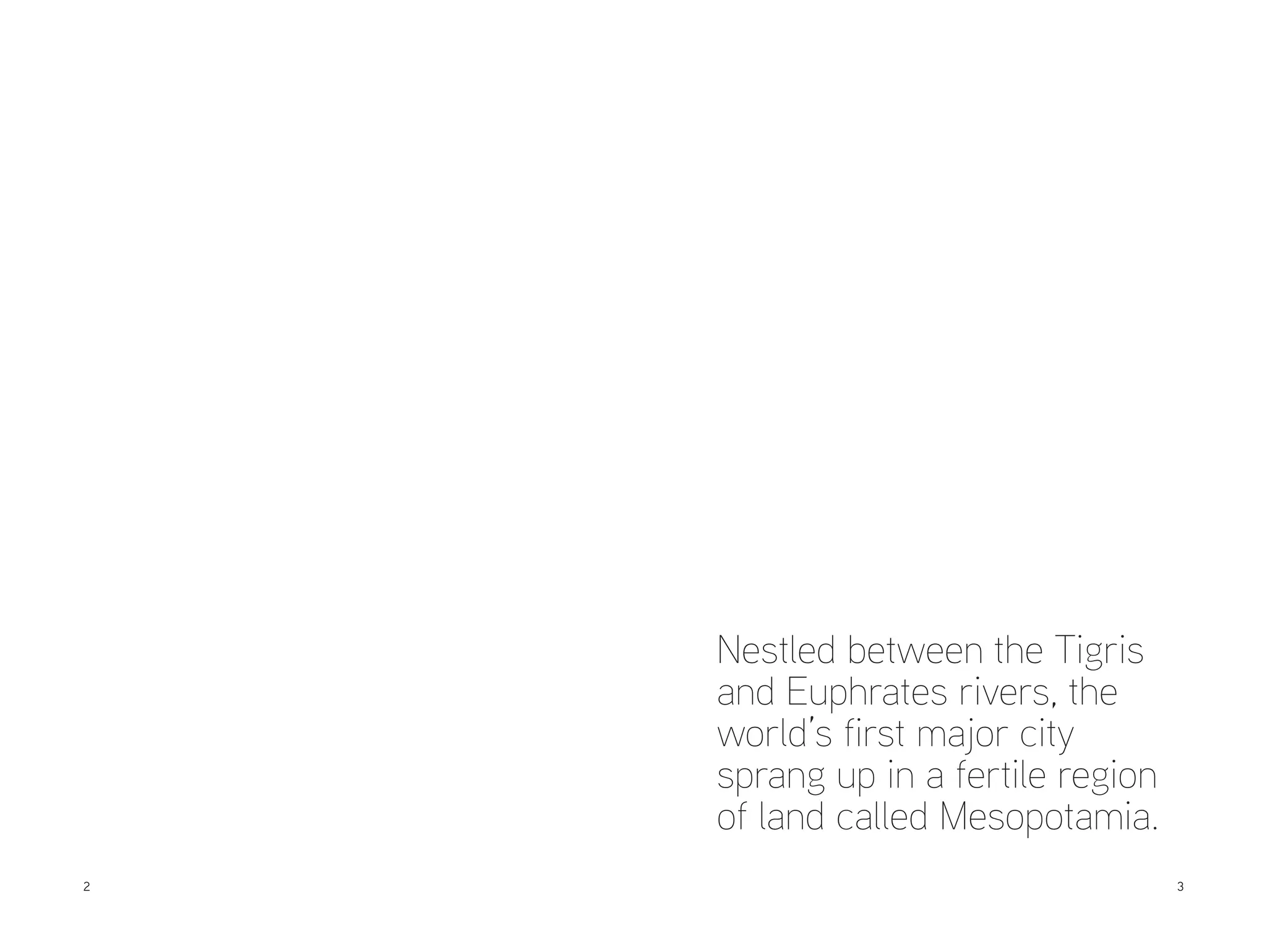
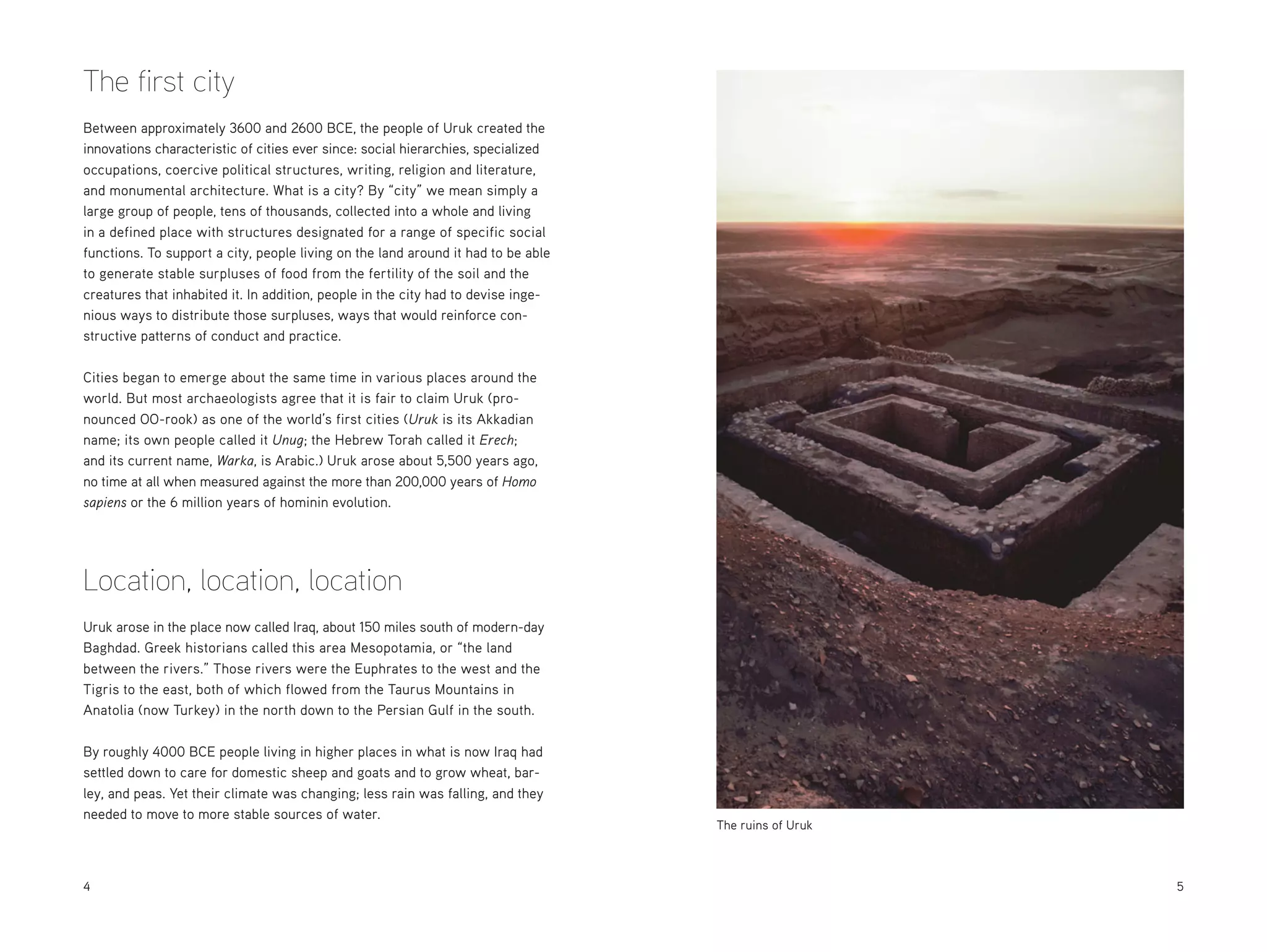
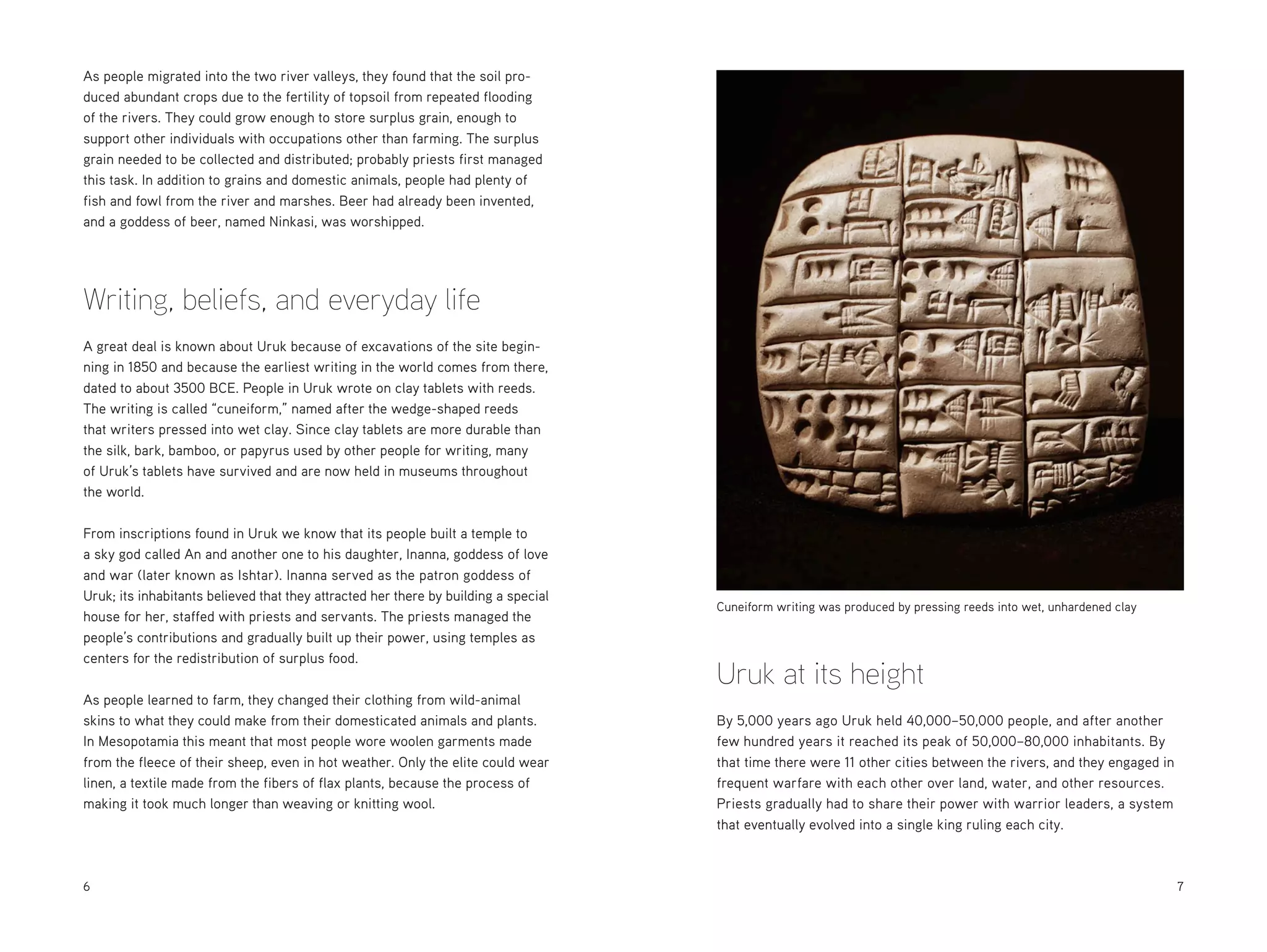
![Early clay tablets in Uruk contain a “standard professions list,” which listed
a hundred professions from the king down through ambassadors, priests,
and supervisors and on through stonecutters, gardeners, weavers, smiths,
cooks, jewelers, and potters. The social structure was topped by a small
ruling and priestly elite, with a much larger group of commoners who either
owned property or did not, and a bottom small group of slaves, those
who were captured in war, convicted criminals, or people heavily in debt.
As a single authoritarian ruler emerged to lead Uruk and its surrounding
farms and villages, historians say that the first state emerged almost
simultaneously with the first city. The state consisted of powerful elites
who could coerce labor and tribute. Why did the majority of people allow
a few people so much power? This is difficult to answer, but on the one
hand it seems that the elites took power as more resources became available. On the other hand, it seems that citizens gave power in exchange
for organization, which permitted large-scale projects like irrigation, and
for security and protection. What may have begun as consensual power
may have evolved into coercive power as elites accumulated more resources.
Writing began in Uruk as a way to keep track of how many sheep, goats,
and measures of grain passed through the central warehouses. It began with
pictures made in wet clay representing the various goods. After about
400 years people had figured out how to use symbols and abstract numbers
instead of drawing a picture for each item. They used a small wedge to
represent one, a small circle to represent 10, a large wedge for 600, and a
large circle for 3,600. Their system of numbers was based partly on 10
and partly on 60 for measuring grain. This latter base-60, or “sexagesimal,”
system led to viewing a circle as 360 degrees.
After about a thousand years, people in Uruk had developed their system
of writing sufficiently to compose hymns, funeral songs, and superhero
epics. Here are some lines from “The Lady of the Evening,” a hymn to the
evening star, which represented Inanna (Sumer refers to the area where
people spoke Sumerian, from the vicinity of modern-day Baghdad down
to the Persian Gulf):
8
At the end of the day, the Radiant Star, the Great Light that fills the sky,
The Lady of the Evening appears in the heavens.
The people in all the lands lift their eyes to her…
There is great joy in Sumer.
The young man makes love with his beloved.
My Lady looks in sweet wonder from heaven.
The people of Sumer parade before the holy Inanna.
Inanna, the Lady of the Evening, is radiant. I sing your praises,
holy Inanna. The Lady of the Evening is radiant on the horizon.
(Wolkstein and Kramer, 1983)
Poets in Uruk also gave us our first superhero story — in fact, our first
recorded story of any kind — The Epic of Gilgamesh. The tale imagines
Gilgamesh, a king who may have actually ruled Uruk at about 2750 BCE,
as 2/3 divine and 1/3 human. He has a friend, Enkidu, who becomes citified
and stops living as a wild hunter. They go on many adventures together,
one of which results in Enkidu being condemned to death, and Gilgamesh
has to accept the loss of his friend. This beautiful story has several modern
versions. Here are a few lines describing the city of Uruk:
When at last they arrived, Gilgamesh said to Urshanabi [the boatman],
“This is the wall of Uruk, which no city on earth can equal. See how
its ramparts gleam like copper in the sun. Climb the stone staircase,
more ancient than the mind can imagine, approach the Eanna Temple,
sacred to Ishtar, a temple that no king has equaled in size or beauty,
walk on the wall of Uruk, follow its course around the city, inspect its
mighty foundations, examine its brickwork, how masterfully it is built,
observe the land it encloses: the palm trees, the gardens, the orchards,
the glorious palaces and temples, the shops and marketplaces, the
houses, the public squares.
(Mitchell, 2004)
9](https://image.slidesharecdn.com/u7uruk16pages2012-131217123232-phpapp02/75/Unit-7-Uruk-The-World-s-First-Big-City-6-2048.jpg)
